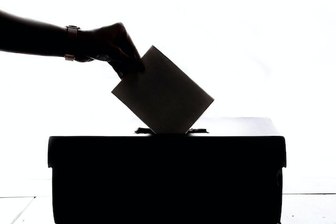Actually, it was never that ardent in the first place. Many voters withheld their judgement. But now, views are hardening up; and while more people still approve than disapprove of the Government’s performance, the gap has narrowed sharply in recent weeks.
The contrast with 1997, when Tony Blair came to power, is telling. Immediately after his landslide victory, 76% approved of his government’s performance, while 13% disapproved. (These figures, from pre-YouGov days, come from Gallup: YouGov started asking the same tracker questions in 2002 when we took over the contract for polling for the Daily Telegraph; we have continued the series since parting company with the Telegraph earlier this year.)
That net rating of plus 63 (that is, 76 minus 13) was never likely to be repeated. But four months in, the net rating was still plus 54, and after twelve months, plus 32. Apart from a blip in March 1998, the net rating did not fall into single figures until September 1999, more than two years into Blair’s first term.
The figures this time are very different. On May 17/18 – a week after the coalition was formed, 39% approved of the Government’s performance, while 26% disapproved and as many as 35% said 'don’t know'. Many of the 'don’t knows' were plainly waiting to see how this novel way of governing Britain worked out.
Five weeks later, after George Osborne's emergency Budget, the contours of coalition strategy were becoming more familiar. The 'don’t knows' were down to 25% - and a larger number of voters were willing to give the coalition the benefit of the doubt. Its net approval rating had climbed to plus 21 (approve 48%, disapprove 27%). Many voters liked the tough talk about Britain’s problems, and they blamed Labour for the country’s plight.
Had this momentum been sustained, then the coalition might have hoped to end up with figures not far short of those of Tony Blair’s government. In fact, it proved to be a high point. Over the past four weeks, the coalition’s approval rating has slipped slowly but remorselessly. Our latest figures report a net rating of plus four (approve 41%, disapprove 37%). In just over two months, the coalition’s rating has declined to levels that were not reached for almost three years under Tony Blair.
This is odd. Just 44% of voters supported Labour in 1997: 61% voted for one of the coalition parties this May. But whereas millions of people who did NOT vote Labour liked the actions of the incoming Blair government, large numbers of people who DID vote Conservative or Liberal Democrat this year are NOT keen on the coalition’s performance.
Plainly, part of the problem is that many voters are growing queasy about the coming spending cuts. No longer is it possible for most of us to believe that these will be confined to efficiency savings and services that affect other people. David Cameron’s warning that ‘we are all in this together’ is proving to be alarmingly true.
Detailed examination of our data helps us to go further to dissect what is happening. (I have combined data from three surveys in mid June, and three surveys in the past week to provide robust data for the supporters of each party). In mid-June 80% of Tories approved of the government’s rating; this has now risen to 84%. These are big majorities; but, even so, approaching two million Tories are withholding their approval.
The figures for the Liberal Democrats are more striking. Among those who voted Lib Dem on May 6, opinions are divided: just 40% approve of the coalition’s performance, while 36% disapprove. No wonder Lib Dem support has slumped since the coalition was formed. Indeed, of those who voted Lib Dem on May 6, just 46% would vote for the party if an election were held now, while 18% would vote Labour, 9% Conservative and 5% for other parties; 22% are ‘don’t knows’ or ‘won’t votes’. To be sure, the Lib Dems have picked up some support from voters who like their involvement the coalition, but there are too few of these to offset the deserters. Overall, Lib Dem support is down by one-third since the election.
The other striking change concerns the attitudes of Labour supporters. In mid-June, 14% approved of the coalition’s performance, while 51% disapproved and 35% said 'don’t know'. In other words, around a half of all Labour voters declined to condemn the Conservative-led government. Now the figures are: Approve 6%, disapprove 79%, don’t know 14%. Partly this reflects a hardening of the attitudes of long-standing Labour supporters; but it also reflects the fact that Labour has gained ground since the election, as it monopolises the growing protest vote. It is about 'disapprovers' switching to Labour, not just Labour voters becoming 'disapprovers'.
In past periods of Conservative rule, moods of anti-government protest often helped the Lib Dems as much as, and sometimes more than, Labour. The early signs from the current parliament are that Labour will be the overwhelming beneficiary if the coalition stumbles. David Cameron and Nick Clegg have not yet exhausted supplies of popular goodwill; their personal ratings, thought not as high as in early June, remain positive. We should also note that Conservative support, unlike that of the Lib Dems, is higher than it was on election day. If the ministers manage to reduce government spending without seriously damaging either front-line services or the wider economy, they can expect the electorate to resume its love affair with the coalition. But, if not, then Clegg in particular will have his work cut out to restore his party’s popularity and to revive his supporters’ faith in his version of partnership politics.









